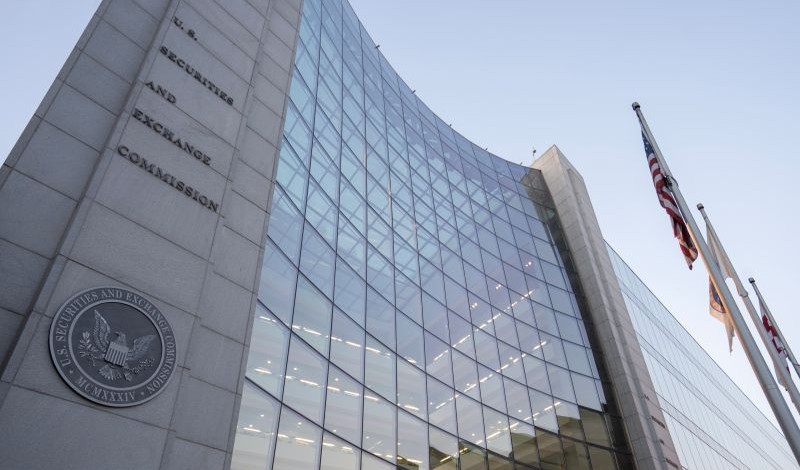
Scholars discuss private litigation filling SEC enforcement gaps.
When the U.S. Securities and Exchange Commission (SEC) fined Under Armour $9 million for misleading investors about its sales growth, the modest penalty imposed by the agency appeared to mark the end of accountability. The SEC did not allege fraud or intent, and found only mere disclosure failures. News of the agency’s investigation gave investors the opening to revive their dismissed case, using the SEC’s findings to meet the stricter pleading rules and discovery limits that constrain private suits. The private suit achieved a $434 million settlement—nearly fifty times the original penalty.
This striking difference underscores the complicated relationship between public and private enforcement. Private suits can multiply damages and recover real money for shareholders, but their timing and scope often hinge on unpredictable factors—whether new facts surface, deadlines align, or counsel acts quickly. SEC enforcement, by contrast, is meant to be consistent and institutionalized, guided by Congress’s design for an expert agency. Yet as the SEC faces record caseloads and resource limits, private enforcement increasingly functions as a key policer of corporate disclosures.
Empirical research shows that SEC cases spike near the close of each fiscal year, suggesting that internal performance pressures and short-term metrics shape enforcement decisions and penalty determination. Other analyses portray the agency as an “entrepreneurial” enforcer that chooses cases strategically—weighing politics, reputation, and limited resources while seeking to appear active in the markets it regulates. Some scholars argue the result is an enforcement system that is visible yet uneven and limited, necessarily leaving space for private actors to pursue claims the agency cannot.
Though private lawsuits often fill these enforcement gaps, such cases rest on the same legal foundations as administrative agency enforcement. Scholars explain that Congress has increasingly turned to the Federal Rules of Civil Procedure as a tool of regulation, enabling courts and private plaintiffs to step in when agencies lack capacity. The same procedural system governing ordinary disputes now provides the backbone for much of federal policy implementation. States mirror this approach. Together, these developments reflect a quiet but profound reallocation of regulatory labor, with courts and private counsel performing functions once seen as inherently administrative.
Legislatures across the country have given citizens the right to bring private lawsuits in areas such as consumer protection, environmental law, and workplace safety to compensate for underfunded or politically constrained agencies. Still, researchers remain divided on whether this privatization diffusion improves accountability.
Some scholars find that stronger SEC oversight encourages investor monitoring, leading to additional suits, suggesting that public investigations can motivate, rather than displace, private enforcement. Other scholars warn that overreliance on private litigation risks inconsistency and excessive deterrence. The gap between bureaucratic restraint and market impact mirrors a deeper institutional tension within the enforcement apparatus itself—between the desire for predictable procedure and the social demand for accountability.
In this Saturday Seminar, scholars discuss how private litigation reinforces and challenges the modern administrative state.
- James J. Park of the University of California, Los Angeles School of Law argues, in an article in the Northwestern University Law Review, that the SEC has become an “entrepreneurial” regulator that seeks visibility and deterrence through large penalties rather than enforcement of a large volume of cases. By framing the SEC as profit-motivated, Park challenges the assumption that public enforcement is inherently more responsible than private action, contending instead that private enforcement plays a crucial role in policing corporate disclosures. Park notes that these entrepreneurial incentives push the agency to focus on novel or high-profile cases, occasionally at the expense of consistency or comprehensive enforcement. Park concludes that understanding these dynamics is key to balancing public and private enforcement.
- Dain C. Donelson, a professor at the Wisconsin School of Business, and Matthew Kubic, and Sara Toynbee of the University of Texas at Austin McCombs School of Business find in a recent article in the Journal of Accounting and Economics that the SEC’s enforcement patterns fluctuate sharply across the fiscal year. Their data show a surge of cases in September, at the end of the agency fiscal year, as officials rush to meet internal performance metrics. Donelson, Kubic, and Tonybee observe that these end-of-year cases are smaller and less complex, suggesting that bureaucratic incentives distort enforcement priorities. They warn that this “September spike” undermines consistent deterrence and propose adjusting performance evaluations to align regulatory behavior with investor protection goals.
- In a note published in the Columbia Law Review,Emily M. Erickson, Columbia Law School Class of 2024, argues that courts should incorporate corporate structure into definitions of corporate scienter—the mental state of fraudulent intent required in securities litigation—to achieve optimal fraud deterrence. Erickson examines three major circuit court approaches for attributing fraudulent intent to corporations, finding each inadequate. She proposes an organizational fault framework inspired by federal sentencing guidelines, arguing that structural design decisions reflect corporate intent separate from individual employees. Erickson contends that this approach would allow courts to hold corporations liable when deficient internal systems prevent fraud detection while providing mitigation opportunities for companies with robust compliance structures, better calibrating corporate incentives regarding securities fraud.
- In an article published in the University of Pennsylvania Law Review,Diego A. Zambrano , Neel Guha, Austin Peters, and Jeffery Xia of Stanford Law School conduct the first systematic empirical investigation of private enforcement—lawsuits brought by individuals rather than government agencies—in state law using computational linguistics and machine learning. Zambrano and his coauthors identify more than 3,500 provisions across all fifty states allowing private lawsuits, ranging from traditional areas like antitrust to novel digital-age claims including privacy violations. Testing the prominent theory that political divisions between governors and legislatures drive private-enforcement adoption, they find no statistically significant relationship, revealing a sprawling, chaotic regulatory landscape fundamentally different from the carefully deliberated federal system.
- In a Cornell Law Review article, Rutgers Law School’s David Noll and the University of Richmond’s Luke Norris suggest that private civil suits to enforce regulatory requirements are now so common that the Federal Rules of Civil Procedure function as de facto rules of private administrative enforcement. Noll and Norris explain how Congress’s mid-20th-century turn toward private rights of action reshaped federal litigation. They note that approximately half to two-thirds of federal civil cases assert statutory claims, and about 95 percent are brought by private parties. To align the Rules with their role in private enforcement, Noll and Norris propose amendments emphasizing faithful implementation of statutory law, enabling nationwide jurisdiction, closing procedural loopholes that thwart enforcement goals, and modernizing rulemaking.
- In a recent working paper, University of Missouri professors Inder Khurana and Hoyoun Kyung and PhD candidate Jingya Li examine whether enhanced SEC oversight encourages closer shareholder monitoring of firms’ regulatory compliance. Khurana, Hoyoun, and Li use firms’ adoption of policies granting the SEC greater access to financial audit records, witness testimony, and other sources of information as natural experiments allowing them to examine the frequency of class-action filings. The authors point to such filings as a proxy for private monitoring and find that stronger oversight increases private monitoring—evidence, they conclude, that public oversight complements, rather than crowds out, private monitoring.
The Saturday Seminar is a weekly feature that aims to put into written form the kind of content that would be conveyed in a live seminar involving regulatory experts. Each week, The Regulatory Review publishes a brief overview of a selected regulatory topic and then distills recent research and scholarly writing on that topic.



